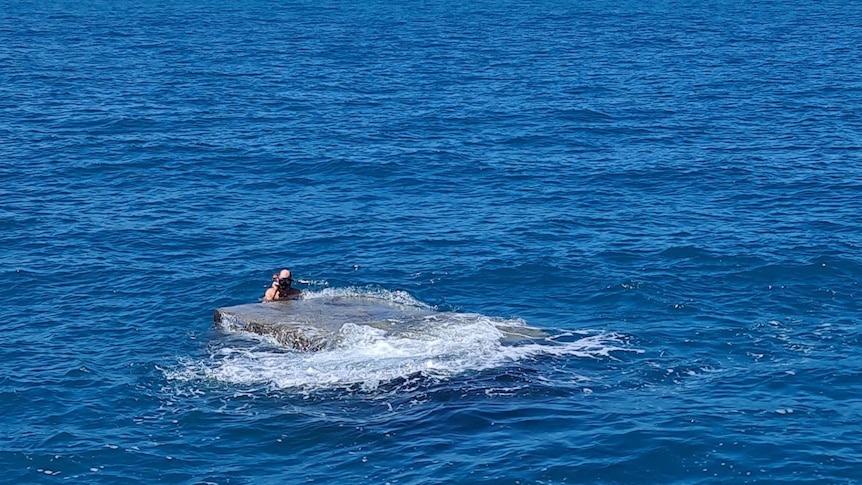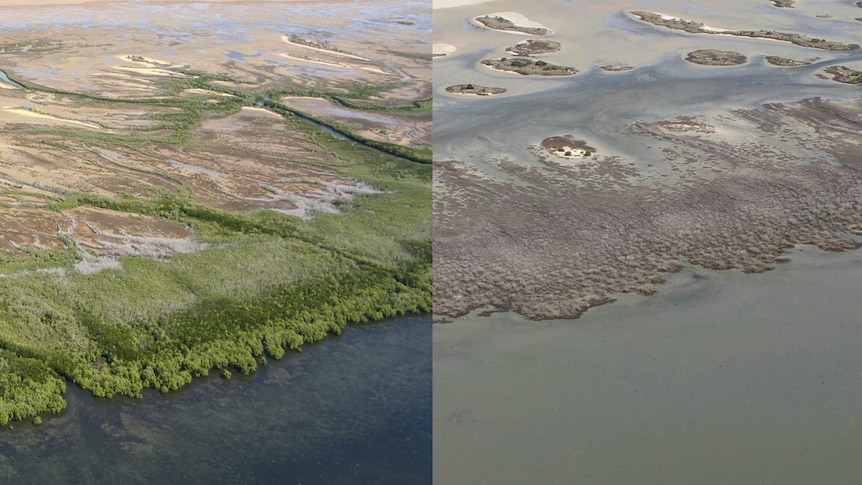A large steel container of unknown origin has been found floating in the Gulf of Carpentaria.
Key points:
- A large steel container has been found floating in the Gulf of Carpentaria
- Container has been marked and flagged with maritime authorities
- Marine debris is an ever-present issue on the Arnhem Land coast
The crew of the Wildcard fishing vessel spotted the object to the north-east of Groote Eylandt while looking for mackerel this week.
“It’s about 5 meters by 3 meters by 4 meters — it’s a sizeable chunk of steel,” the Wildcard’s Tiger Davey said.
“It must be a bit empty because it is floating just below the surface, bobbing in and out of the water.
“We were only passing about 300 meters off [the container] when we spotted it.
“If you weren’t paying attention or it was night time, it is highly unlikely that it would have been visible on radar or seen by somebody.”
The Wildcard pulled up beside the container, with a crew member diving into the water to inspect the object, but they were unable to open its hatch.
Mr Davey said it was not a regular shipping container.
“We think it’s a fuel pod or some sort of storage pod because it has some lifting lugs and a big hatch on the top,” he said.
“It has a hose coming off it, so I would say it’s off a boat and it’s been lost overboard or dropped.”
The container was too big for the Wildcard to tow to a safe location, so the crew tied a marker buoy to it and flagged it as a navigational hazard with maritime authorities.
Marine debris a major issue in Gulf
The Gulf of Carpentaria has a significant marine debris problem, with ghost nets, fishing equipment, and rubbish from Indonesia and Papua New Guinea regularly washing up on remote beaches.
“With the major shipping routes we have over the top end of Australia, [the container] could have come from anywhere,” Mr Davey said.
“The currents push everything into the Gulf and then the south-easterly winds push everything over to this side [near Groote Eylandt].
“Hence the huge issue with ghost nets and rubbish on this western side of the Gulf… we have quite a bit of flotsam and nets through this area.”
Maritime Safety NT has issued a marine navigation warning about the container.
“A coastal notice to mariners has been issued for the waters off North East Groote Eylandt after a large floating container was spotted in the area,” the Maritime Safety NT notice said.
“All vessels in the vicinity to keep a sharp lookout and navigate with extreme caution.”
.

